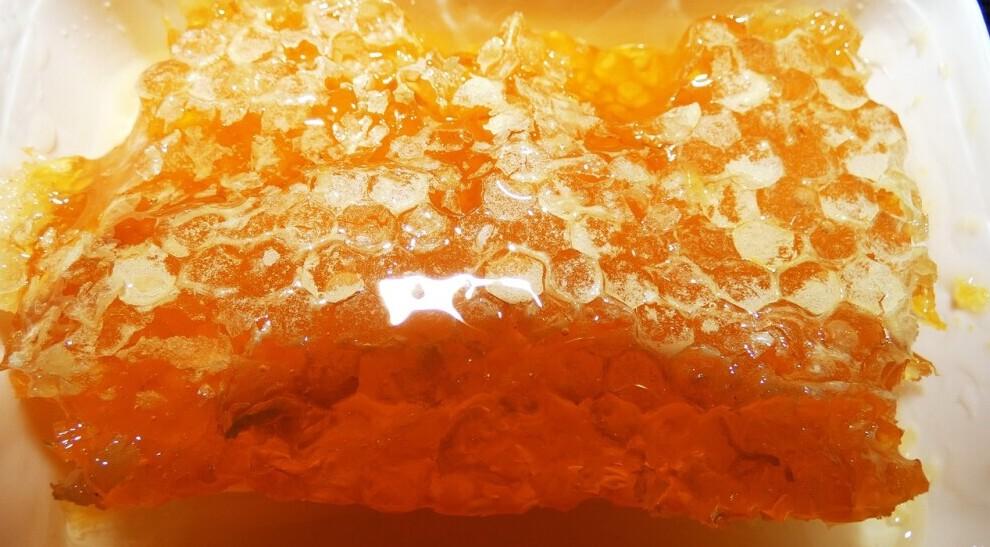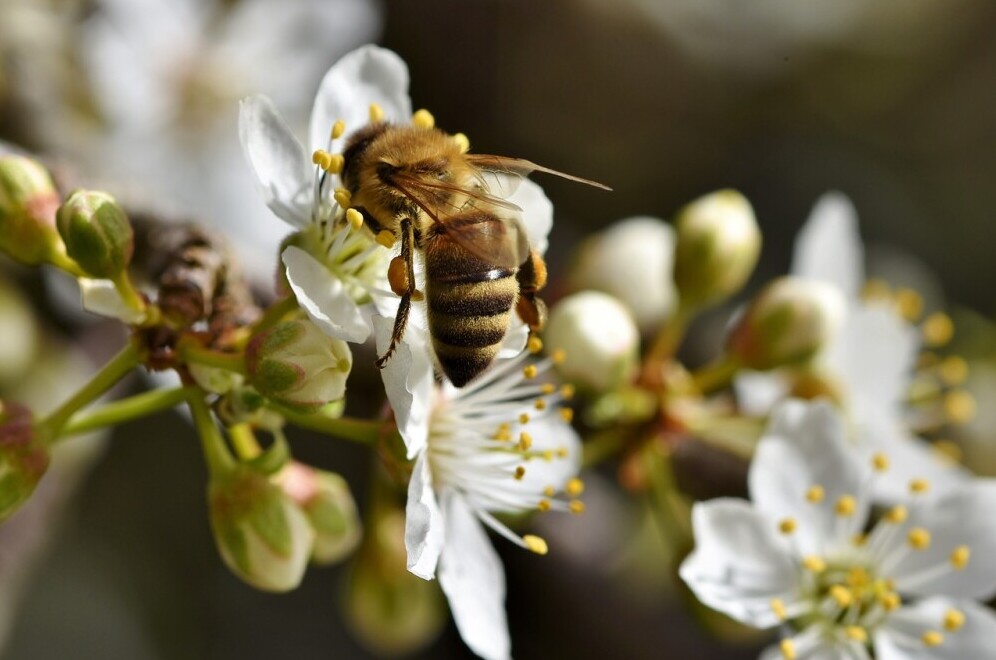Honey has long been cherished not just as a natural sweetener, but as a remarkable superfood loaded with powerful health benefits. Packed with antioxidants — especially polyphenols and flavonoids — it helps protect your cells from oxidative damage, supports a strong immune response, and calms inflammation. But honey benefits do not end there — its natural antimicrobial properties, stemming from hydrogen peroxide, low pH, and unique bioactive compounds, not only aid in wound healing but also soothe coughs and throat irritation.
And when you’re feeling drained, honey’s simple sugars — fructose and glucose — offer an instant energy boost, making it a savior for athletes and midday slumps alike. In this guide, we’ll dive deep into how honey delivers on these claims and why it deserves a spot in your daily routine.

Flavonoids & Polyphenols in Honey: What Are They & Why They Matter
1. Polyphenols
A broad class of plant-based antioxidants — found in fruits, tea, cocoa, and honey. In honey, phenolic acids and flavonoids can act as markers of floral origin and are tied to health benefits like anticancer, cardiovascular protection, anti-inflammatory, and neuroprotective effects.
2. Flavonoids
A subgroup of polyphenols (e.g., quercetin, kaempferol), with strong antioxidant, anti-inflammatory, anticancer, and antimicrobial properties. They are found abundantly in darker or specific floral honeys (e.g., lavender, thyme, chestnut). They may aid in detoxifying heavy metals, protecting pancreatic cells, and combating oxidative stress linked to chronic disease.
In short, flavonoids and polyphenols are mainly responsible for honey’s healthful reputation—protecting cells, supporting immunity, aiding digestion, and even enhancing skin health.
Inside Honey: Key Nutrients That Boost Health & Flavour
The chemical composition of honey is quite fascinating. It’s primarily composed of such monosaccharides as fructose and glucose, making up about 70-80% of its sugar content. Alongside these sugars, honey contains water, vitamins, minerals, and enzymes, contributing to its unique properties and health benefits.
Honey’s density can vary depending on its moisture content, but generally, it ranges between 1.38 to 1.45 grams per cubic centimeter. This density is part of what gives honey its thick, viscous consistency that we all recognise. Water content is roughly 15-20%, which plays a crucial role in determining honey’s shelf life and susceptibility to fermentation.
An interesting property of honey is its solubility. Despite being dense and viscous, honey dissolves quite well in warm water, making it an excellent sweetener for teas and other beverages. It’s this solubility combined with its rich flavor profile that makes honey a versatile ingredient in both cooking and natural remedies.
Understanding these scientific aspects of honey can enhance your appreciation for this ancient food. It’s not just delicious; it’s a complex substance with a rich composition and remarkable properties.
The Marvelous Process: How Honey Bees Create Honey
The journey of honey starts with nectar collection. Worker bees fly from flower to flower, gathering nectar using their long, tube-like tongues. This nectar is stored in their special stomachs, known as ‘honey stomachs.’ It’s different from their regular digestive stomach; dedicated solely to nectar transport.

Once a worker bee’s honey stomach is full, it returns to the hive. Here, the nectar undergoes a transformation. The worker bee passes nectar to another bee by regurgitating it. This process might sound unappetising, but it’s crucial. The receiving bee helps in mixing the nectar with enzymes that break down complex sugars into simpler ones.
Next, the bees deposit the enzyme-rich nectar into the honeycomb cells. But the work is far from over. Bees fan their wings to evaporate water from the nectar. This concentration process thickens the nectar, turning it into honey. The effort it takes is immense. To produce just one pound of honey, bees must visit around two million flowers.
Once the moisture content is reduced to about 18%, the bees seal the honeycomb cells with wax to protect and preserve the honey. This capping marks the final step of honey production, transforming the nectar into the ready-to-eat sweetener we savor.
The process ensures that the honey stays fresh and unfermented for a long time. Understanding this method highlights the effort and complex teamwork of bees, making us appreciate each spoonful even more.
Ripe vs. Unripe Honey: Understanding Moisture Content
Moisture content plays a critical role in defining the quality and stability of honey. In its essence, ripe honey is fully processed by the bees, capped and ready for long-term storage, while unripe honey is still in the process of maturation with higher moisture levels.
Ripe honey typically has a moisture content of below 20%. This low moisture level ensures that the honey remains stable and resistant to fermentation. Unripe honey, on the other hand, has a higher moisture content, often above 20%, making it more prone to fermentation and spoilage.
Managing moisture content is vital for beekeepers. Best practices include monitoring the honey’s moisture levels before storage. This isn’t just about maintaining quality; it’s also about extending shelf life and preventing potential health risks associated with fermented honey. It’s about preserving the natural goodness and ensuring that every spoonful is as delightful and healthy as intended.
A special tool, called refractometer, is used to measure the moisture content accurately. It is available to buy and easy to use.
Stages of Honey: From Liquid to Set
Honey comes in various forms, each with its unique characteristics and uses. Understanding these stages can help you choose the right type for your needs.
Comb honey is honey in its most natural state, still in the beeswax comb. It’s less common but highly valued for its purity and unique eating experience.
Liquid honey has smooth, runny consistency. Normally it is the initial stage of raw honey when it is freshly extracted from the comb and properly strained. (There are cases, however, when honey crystallises while still in the comb, for example, collected from some plants in spring.)
Lightly filtered honey removes large particles like wax and pollen but keeps most of the beneficial components. It’s clearer than raw honey and often preferred for its smoother texture while still retaining the essential nutrients.
Chunk honey includes pieces of comb honey submerged in liquid honey, offering a mix of textures.
Soft set honey is smooth and creamy, with a spreadable consistency similar to soft butter. It’s easy to use on toast or in recipes requiring a thick but pliable texture.
Medium set honey has a semi-solid texture that is thicker than soft-set but less rigid than hard-set honey. It can still be spreadable but with more resistance.
Hard set honey: dense and solid, it is firm and requires a spoon or knife to scoop out. It is often grainy in texture.
Creamed honey, also known as whipped or spun honey, has a smooth, spreadable consistency. It’s made by controlling the crystallisation process, resulting in fine crystals that give it a creamy texture. This type is perfect for spreading on bread and won’t drip like liquid honey.
Choosing the right type of honey depends on personal preference and intended use.
Health Benefits of Honey: Nature’s Golden Elixir
Honey isn’t just a sweet treat; it’s packed with an array of health benefits that make it a staple in many households.
Nutritionally, honey contains vitamins, minerals, and antioxidants, contributing to overall health. These components can help bolster your immune system, making you better equipped to fend off illnesses.
One of honey’s standout features is its antimicrobial properties. It has been used for centuries to treat wounds and burns. The high sugar content and low pH create an environment that inhibits bacterial growth. Applying honey to minor cuts and burns can aid in faster healing, reducing the risk of infection.
In addition, honey is rich in antioxidants, which help neutralise harmful free radicals in the body. This antioxidant activity can reduce oxidative stress, lowering the risk of chronic diseases such as heart disease and cancer.
Honey is often used as a natural remedy for soothing sore throats and suppressing coughs. A spoonful of honey can coat the throat, providing relief from irritation and inflammation. In fact, some studies suggest that honey could be as effective as over-the-counter cough suppressants.
Research has demonstrated honey’s effectiveness in gastrointestinal health too. It can help with issues like ulcers and gastroenteritis due to its anti-inflammatory and antimicrobial properties. It also promotes the growth of beneficial gut bacteria, contributing to a healthy digestive system.
Consuming honey also has an energy-boosting effect. The natural sugars provide a quick source of energy, which is especially useful for athletes and individuals needing a quick pick-me-up during the day.
With these health benefits, incorporating honey into your daily routine can offer both delicious flavor and valuable nutritional support. It’s a small step that can lead to significant health improvements.
To Filter or Not: The Debate on Honey Processing
Filtering honey is a contentious topic among honey enthusiasts and producers. Filtering provides a clearer, smoother product by removing particles like wax, bee parts, and pollen. While it can make honey more visually appealing, some argue that excessive filtering also strips away beneficial components such as enzymes and antioxidants.
One key advantage of filtering is improved aesthetic appeal and consumer preference. Clearer honey often attracts consumers who may associate cloudiness with impurity or spoilage. This boosts marketability and shelf life, as the absence of particulates can prevent crystallisation, making filtered honey easier to pour and use.
On the downside, heavy filtration can remove some of the beneficial elements found in raw honey. Pollen, for instance, contributes to honey’s potential allergy-relief properties. Enzymes like glucose oxidase play a role in honey’s antimicrobial effects. Removing these can diminish honey’s natural health benefits.
Pasteurisation is another aspect of honey processing and involves heating honey to eliminate yeast cells and prevent fermentation, especially in higher moisture honey. Though it increases shelf life, pasteurisation can also degrade some of honey’s beneficial enzymes and antioxidants, reducing its nutritional value.
The debate ultimately boils down to consumer preferences and intended use. Some people prefer raw, minimally processed honey for its full range of benefits, even if it means dealing with crystallisation and particulates. Others opt for filtered and pasteurised options for their clarity, smooth texture, and ease of use.
Understanding both sides of this debate can help inform your choice. Whether you lean towards raw and natural or filtered and pasteurised, knowing the pros and cons enables you to make an educated decision that aligns with your needs and values.
Heating Honey: Do’s and Don’ts
Heating honey carefully is essential to preserving its delicious flavour and beneficial properties. High temperatures can damage the delicate enzymes, antioxidants, and vitamins that make honey a nutritional powerhouse.
The maximum safe temperature for heating honey is generally around 95–100°F (35–38°C). According to the National Honey Board, exceeding this temperature can degrade the beneficial enzymes and antioxidants, reducing honey’s health benefits. USDA guidelines echo this, suggesting that even slight overheating can cause honey to lose its nutritional value and alter its flavor.
Research studies confirm these guidelines. For example, a study published in the Journal of Food Science found that heating honey above 104°F led to a significant decrease in its antimicrobial properties and antioxidant levels. These findings underscore the importance of gentle heating to maintain honey’s quality and benefits.
When warming honey, consider using a double boiler or a warm water bath. Place the honey jar in warm water, gradually increasing the temperature to avoid overheating. Microwaving honey is generally not recommended, as it’s easy to surpass the safe temperature threshold, potentially damaging the honey.
If your honey has crystallised, gently warming it can return it to its liquid state without compromising its quality. Regularly stirring and monitoring the temperature ensures the honey remains safe and nutritious.
Keeping these practices in mind helps you get the most out of your honey. By understanding the importance of proper heating techniques, you can enjoy its health benefits and rich flavors to the fullest.
